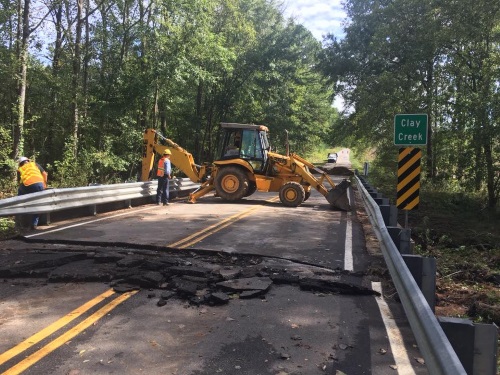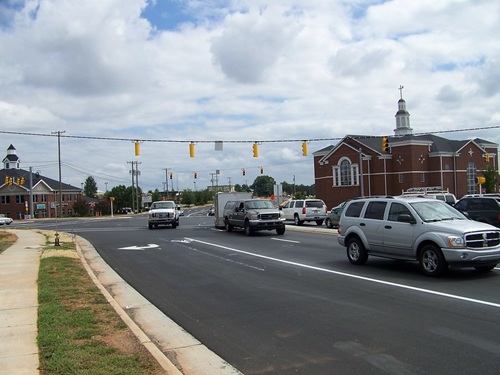A Brookings Institution blog post on April 16 shined a light on an issue that’s becoming a growing problem for state departments of transportation: replenishing and expanding the infrastructure workforce.
[Above photo by the South Carolina Department of Transportation.]
“Just as our physical infrastructure systems are aging and in need of attention, so too are the workers who design, construct, operate, and oversee these systems,” noted Joseph Kane, senior research associate and associate fellow of the group’s metropolitan policy program.

“In other words, these workers are not only constructing projects in the short term, but maintaining all types of facilities over the long term – from ports and power plants to railroads and waterways,” he said. “The problem is that many of them are nearing or are eligible for retirement, and there is not a strong training pipeline to educate and equip a new generation of talent with the skills they need.”
Kane pointed out that past Brookings research indicated that a “wide range of workers are involved in managing the country’s infrastructure” and that the latest labor data from 2018 shows a “continued demand” for skilled workers throughout the infrastructure sector.
“Estimates from 2018 find that nearly 17.2 million workers – or about 12 percent of all workers nationally – are employed in infrastructure jobs, concentrated in 94 different occupations,” he said.

“Electricians, water treatment operators, and civil engineers are among the largest occupations overall, in addition to many other positions in the skilled trades, finance, and management,” Kane added. “Truck drivers and material movers remain essential to carrying out a range of non-automated tasks. Taken together, infrastructure jobs employed more workers than retail (16 million) or manufacturing (12.6 million) among other sizable [economic] sectors.”
State DOTs are already engaged in a variety of efforts to recruit and retain workers across those disciplines.

For example, the Hawaii Department of Transportation’s highways division recently initiated what it calls the “Wiki Wiki Hire” pilot program in conjunction with the state’s Department of Human Resources Development to accelerated access to lists of eligible civil service candidates for civil engineer and engineer-in-training classes. That program will also allow eligible applicants to contact Hawaii DOT directly to schedule interviews, noted Ed Sniffen, deputy director for highways, in a statement.
“We’re excited to be able to use the Wiki Wiki Hire process to fill our engineering vacancies and are committed to using these available resources to get qualified workers into positions within one to two weeks,” he said.
The worker shortage many state DOTs are experiencing is encouraging some of them to explore “outside the box” solutions.

For example, Scott Bennett, director of the Arkansas Department of Transportation, noted during a panel discussion Jan. 15 at the 2019 Transportation Research Board’s annual meeting in Washington, D.C., that maintenance workers, truck drivers, and day laborers are becoming “some of the hardest positions to fill” within his organization.
For that reason, his agency is recruiting workers from “non-traditional” labor pools, as well as partnering with two-year educational institutions to offer more vocational training opportunities to train a new generation of plumbers, welders, and the like.
“We’re starting to partner with homeless shelters and Goodwill to hire workers for our maintenance/labor areas,” said Bennett. “If they don’t have a GED [General Equivalency Degree] we’ll help them get one. The only thing they have to pass is a drug test; if they can do that, we can help them get their feet back on ground. Even if only one out of 10 works out, that still helps us.”
 Top Stories
Top Stories


